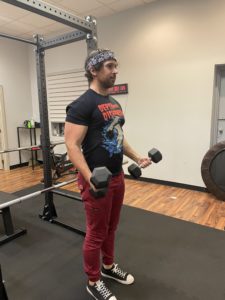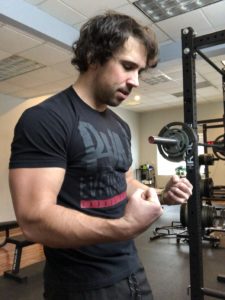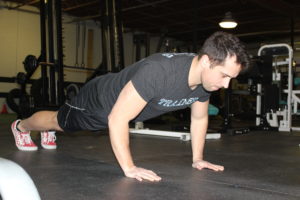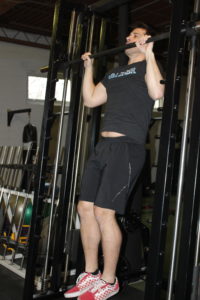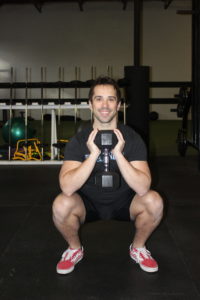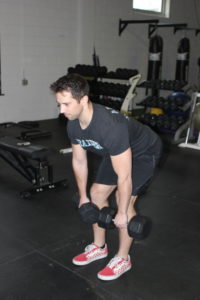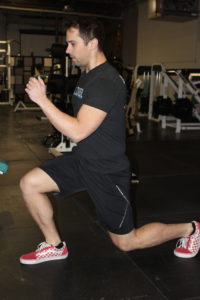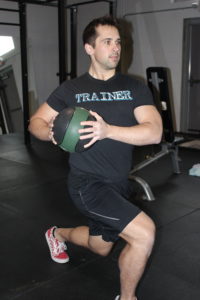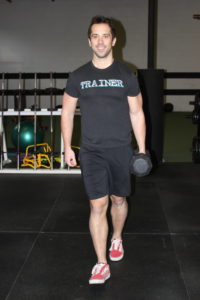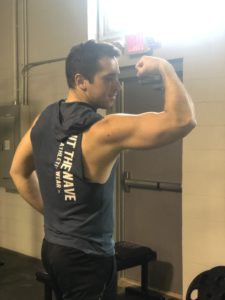Not everyone is cut out to be a personal trainer, just like everyone is not cut out to be a doctor, or plumber, or desk worker, etc. But if you want to give it a go, it’s a booming industry with a lot of potential for growth and a job position that should be sticking around for a while. People are becoming more sedentary and unhealthy – but many are REALIZING this and seeking help from professionals to get their lives in control to be happy, healthy, and stress free.
Beyond getting certified and deciding if you’re going to work for yourself or for someone else as a trainer, there were a few tips that got passed along to me early on that when taken to heart, helped me grow leaps and bounds for myself and my clients and I’d like to pass them along to you! Here are my 6 tips for new personal trainers that will help any personal trainer new to the game.
- Train Everyone
Most literature you will read will tell you to “find your niche” and maybe you’re entering the fitness world with one in mind and that’s great! But when you’re starting out, cast a wide net and try working with anyone and everyone you can. This will help you learn how to work with different types of people; work through problems you might not know you could solve; really confirm or discover your niche community; and just help you gain experience on the fitness floor helping people work toward their goals. When I first started, I thought I would help people work through transformations – turning their bodies from flab to fab, because that’s what I did. I lost the weight and put on muscle and thought I could help them do the same. But as I worked with different people, I found that my best clients are either men/women over the age of 50 who are just trying to stay healthy and active for themselves and their families; and 25-35 men who were seen as “scrawny” and looking to “bulk up”. Though I’m confident to help people outside of those goals, those are where I seem to thrive. I wouldn’t have known that if I tried to only stick with “fat loss” or “transformation” clients. Working with a little bit of everyone helps uncover who you work best with and can set you up for long term success.
- Don’t be afraid to say, “I don’t know”
Being a personal trainer comes with a lot of bravado and ego. Typically you work out to keep yourself healthy and one of the best non-scale victories of working out is confidence. But it also comes with one of the biggest catches – you THINK you know everything, but if you’re honest… you don’t.
AND THAT’S OKAY.
As a new trainer, you’re going to do your best to help answer every question your client has and you’ll be compelled to maybe even lie when something comes up that you’re not sure about. DON’T. Not only can people smell BS, when it comes out that you’re wrong, it looks terrible on you and you’ve lost trust right then and there. They came to you and chose you because they trust you know what you’re doing and if that trust is lost, good luck finding it again. But when someone asks you a question that stumps you, and you say, “That’s a great question, I’m not really sure….” What that does is allow you to follow up with, “…but let me do some research and let’s discuss further when you come in for your next session.” Which does a couple of cool things…
- It establishes that you’re human and you can set aside your ego. Being open and honest and showing some of our own flaws like that can help solidify trust and the bond between you and the client.
- It gives you the privilege of doing some research to learn more – which is one of the best things about this profession. I’m still relatively new at only about 2+ years as a trainer, but I feel like I learn something new every day. And learning something new means not only being able to discuss with the client who asked but sharing with others who might have the same questions!
Saying, “I don’t know” can be a huge benefit to help you establish trust and learn something new to expand you, your client, and your communities’ horizons.
- Other trainers are NOT your competition
You should not be afraid to watch what other trainers do or ask them for advice or help. We are all in the industry of helping people better themselves through training and nutrition. Helping people is our number one priority and helping each other is a very close second. If I can help you learn a new exercise variation or discuss ways we help clients work toward similar goals, and you can apply them to your clients, then that’s a big win for them, you, me, and everyone around. There are 7+ billion people on this planet… there are plenty of clients for all of us – let’s learn from each other and help them all become the best version of themselves possible!
- Don’t chase dollars, chase change
Money is cool and allows you a lot of freedom to do cool things. But if you’re new and start charging top dollar… good luck. There are a number who can succeed at this, but the best are those who focus on helping clients reach their goals.
“If you build it, they will come.”
Put in the reps of helping those around you that will work with you at a fair price get results and as you grow, build on your systems and PROVE you know what you’re doing… and the cash will follow.
Helping people become their best should be your top priority. If you can do that, the cost to them won’t matter.
- Don’t fret about name, branding, logo, etc.
Piggybacking number 4 above here, don’t fret about branding and logo and image. Get results! It doesn’t matter if you’re name is Eric Does Training – as long as your name is Eric and you train people, not only is it spot on, but it will avoid any sort of confusion about who you are and what you do. What’s more important is the helping people. Like I mentioned, without tangible evidence that what you know and apply to help people actually works, the flashiest logo, brand name, content, etc. will be found out and left behind.
As you grow and find who you are, what you believe and stand for, and what kind of person you want to work with, the rest of that will follow.
- Be Yourself and have fun!
Like it or not, you’re not just selling a service to help people. You’re selling yourself. If people don’t think you’re being genuine or see that you’re putting up a front, they’ll avoid it like the plague. Be true to who you are and know who you want to work with, and you will attract the clienteles that are the right fit. As Jonathan Goodman of The PTDC once said, “People don’t buy training, they buy the trainer.” If they don’t trust or like who you are and what you bring to the table, it’ll never work. Who you are is just right for someone and if you put it out there, you will find each other.
On top of that – have fun! You are helping people change their lives for the better. They have taken the time to look in the mirror and say to themselves, ‘Fuck whatever is happening right now – I am ready to become my best damn self!” and they came to you and chose you to help them do that. There is nothing cooler (to me) than having someone come to you who has no idea what their doing, and being able to help them not only learn what to do physically, but watch that internal lightbulb click on in THEM when they reach a goal they thought might never happen.
Being a personal trainer is hard and it’s not for everyone. It’s grueling hours and can be frustrating with clients who push back or don’t give their all like you wish they would… but it should rank in the list of most rewarding jobs you can do. We get the opportunity to help people become their best selves and share knowledge that we continue to learn.
If you’re just starting out, know that you have what it takes and you can be wildly successful, and it starts with following these few simple tips.
If you’re a new trainer, what are some tips you’ve been given outside of these that have helped you grow into the best you around? Drop them in the comments and let’s spread the good word across the industry to help others.

 arded compared to protein. Carbohydrates should be more focused prior to a training session as they will help provide the energy needed to get through your training session.
arded compared to protein. Carbohydrates should be more focused prior to a training session as they will help provide the energy needed to get through your training session.